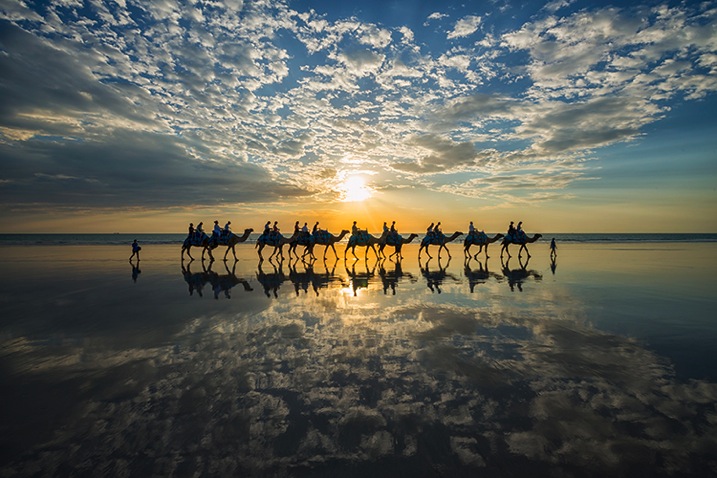The post 5 Photography Rules for Capturing Photos Your Audience Will Adore appeared first on Digital Photography School. It was authored by Jaymes Dempsey.
It’s hard to stand out as a photographer.
These days, you have so many photos to compete against; the internet is drowned in smartphone snapshots (with layer upon layer of filters).
So how do you create images that cut through all the noise? How do you create art that will truly stun your audience?

In this article, you’ll discover 5 simple photography rules for capturing photos – which will ensure that your photos are truly special.
Let’s dive right in, starting with…
1. Do everything you can to emphasize your subject
If you want to capture photos that stand out, then this is your number one rule:
Pick a subject. Something that stands out in your photo. Something that acts as an anchor point.
And make that subject stand out as much as you can.

You see, it’s your main subject that actually captivates people. The rest of the scene exists to enhance that main subject.
But how do you enhance your main subject?
Start by making sure that your main subject is extremely sharp. Make sure it’s the sharpest part of the photo, in fact.

And make sure that your main subject has some color. Color draws the eye!
Third, make sure your main subject is bright and well-exposed. A dark subject (especially if it’s surrounded by a dark background) just won’t work. If you do include a dark subject, then make sure that the background is extremely bright.

On a related note, more contrast is nearly always better. If you can incorporate some ultra-dark tones and ultra-light tones in your photos, your photo will instantly improve. Ideally, your background and your main subject will contrast heavily.
Last, keep your background as clean as possible. It doesn’t have to be completely uniform but should be simple and well-organized. When in doubt, go for a monochromatic background, such as black, white, or green.
2. Use complementary colors to make your photos pop
You already know how important it is to include contrast.
But there’s a special kind of contrast that deserves its own mention:
Color contrast.

Color contrast refers to the addition of colors that sit opposite one another on the color wheel (also known as complementary colors).
You’re probably familiar with color contrast, even if you don’t know it. We see complementary color pairs all the time: red and green, blue and orange, yellow and purple.

Now, color contrast is perfect for creating stand-out photos. It catches the eye, and it practically forces viewers to look more deeply.
One thing to note, however, is that you shouldn’t use too many contrasting colors. I recommend simply including two complementary colors (and potentially a third non-complementary color). If you incorporate too much contrast, the photo will become too powerful, and the colors will start to clash.
I also recommend you limit the amount of the complementary colors that appear. If you have two complementary colors, include a lot of one color, and a little of the other. This will prevent the photo from overpowering the viewer.

Finding contrasting colors might seem difficult. But with a little effort, you should be able to incorporate a contrasting color pair.
And you’ll love the effect!
3. Use negative space to stun viewers from a distance
Negative space is emptiness in a photo.
By this, I’m referring to empty sky, empty water, or even an empty background – it all counts as negative space.

And negative space is extremely valuable, for a few reasons.
First, it gives the main subject some breathing room.
It also makes compositions feel calm and more stable (which is generally nice to have in a photo).
But the best thing about negative space is that it is a place where the eyes don’t rest – thereby directing the viewer straight to the main subject.

So here’s what I recommend:
When you’re deciding on a composition, incorporate at least some negative space into the photo. If you can, create a lot of empty space – but even a little space will go a long way.
It’s best if the negative space exists around the main subject. That way, attention is immediately directed to the focal point of the photo.
But any negative space is good!

4. Include leading lines to draw in the viewer
I’ve talked a lot about emphasizing the main subject of your photos.
This is because the most striking photos hit the viewer over the head with their subject. They pull the viewer in and direct them through the frame – right to the focal point.
That’s the mark of a powerful photo.

And here’s another great way to emphasize your subject:
Use leading lines. Include them whenever you can.
Leading lines are lines that draw the viewer through the frame. They can be anything vaguely line-like: A river, an outstretched arm, even a flower petal.

Whenever you find a photo-worthy scene, search for leading lines. And incorporate them into your composition. Ideally, the leading line moves toward your subject. But you can also include leading lines that take the viewer around the frame.
Most scenes have some sort of leading line. You just have to look hard enough!
5. Always shoot in the best light you can find
Out of all the rules in this article, I think this one will give you the biggest bang for your buck. Because it’s so easy to shoot in the best light – you just have to know what the best light is.
And once you know this…
Your photos will never be the same. Seriously.
So, what is the best light?
The best light is the hour after sunrise and the hour before sunset, known as the golden hours.

These are the times when the sun is low in the sky, and casts a golden glow over the landscape. If you shoot during the golden hours, your subject will be bathed in beautiful light. And you’ll absolutely love the images you capture.

Now, there are other times when the light is good, depending on your genre of photography.
If you’re a street photographer, you should try shooting during the middle of the day, when the light is sunny.
If you’re a flower photographer, you should try shooting when the sky is heavily overcast.

If you’re a portrait photographer, you should also try working on overcast days.
But even though these types of light do work…
…the golden hours are perfect, without fail. They’ll always get you something wonderful.

Photography rules for capturing photos your audience will adore: conclusion
Standing out in the crowded field of photography is a difficult task.
But if you apply these simple photography rules, you’ll have a much, much better chance.
So take these rules to heart, get out, and start shooting!
Excitement awaits.

Have any more rules for capturing photos that your viewers will adore? Share them in the comments!

The post 5 Photography Rules for Capturing Photos Your Audience Will Adore appeared first on Digital Photography School. It was authored by Jaymes Dempsey.










.gif)
You must be logged in to post a comment.